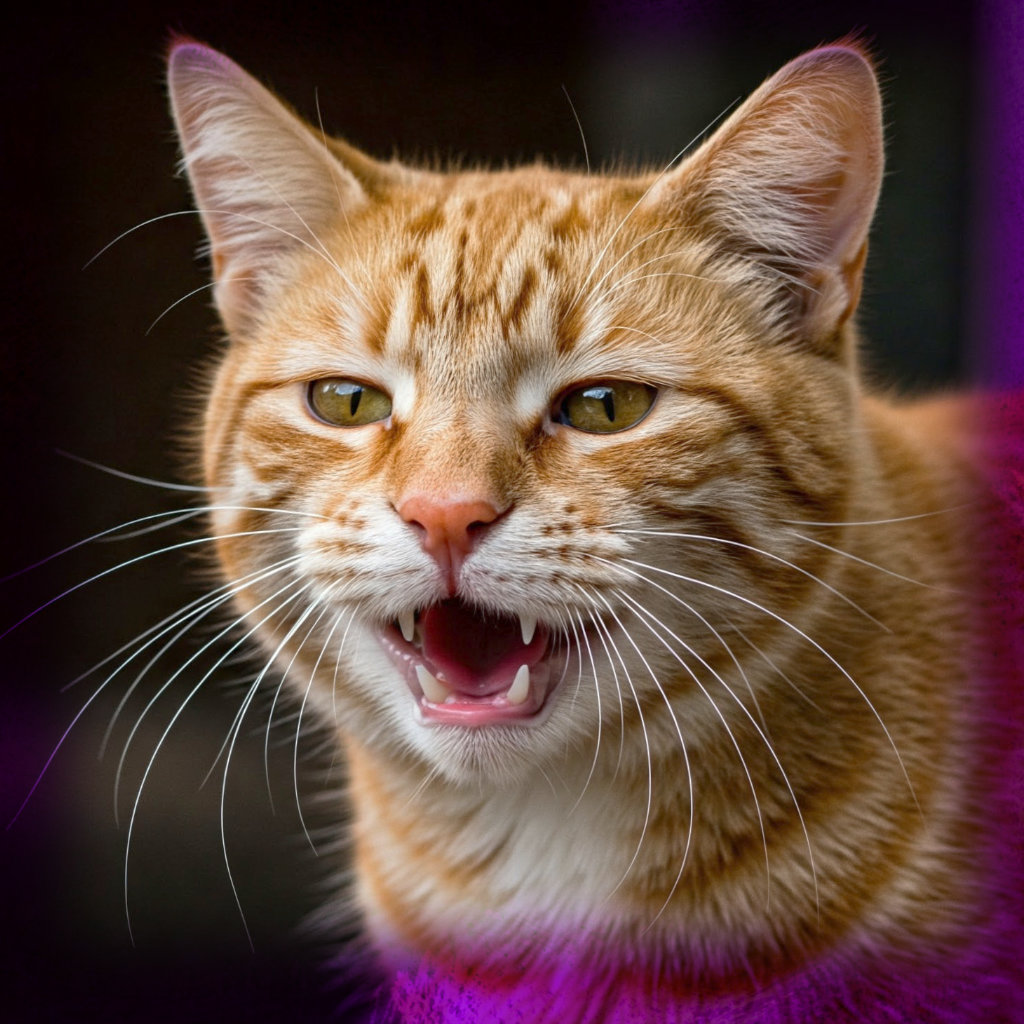Introduction: The Complex Language of Feline Growling
Few sounds in the animal kingdom carry as much primal intensity as a cat’s growl. This low-frequency vocalization represents one of the most misunderstood forms of feline communication, often misinterpreted by well-meaning owners as simple aggression. In reality, growling serves as a sophisticated distress signal—a complex interplay of evolutionary biology, emotional state, and immediate environmental factors.
Recent studies in feline ethology reveal that growling occupies a unique position in cat communication hierarchies. Unlike the reflexive hiss or the social meow, growling demonstrates intentionality and situational awareness. The domestic cat (Felis catus) employs this vocalization with remarkable precision, using it only when other warning signals have failed or when facing significant perceived threats.
This comprehensive guide draws upon veterinary behavior research, zoological studies, and clinical case histories to provide:
- A neuroscientific breakdown of growling mechanics
- Detailed classification of growl types and triggers
- Step-by-step intervention protocols
- Long-term behavioral modification frameworks
- Special considerations for multi-cat households
By understanding the nuanced reasons behind this behavior, owners can transform growling episodes into opportunities for building trust and strengthening the human-feline bond.
Section 1: The Bioacoustics of Feline Growling
Physical Production Mechanism
The feline growl originates through a coordinated series of physiological events:
- Laryngeal positioning: The epiglottis partially covers the trachea
- Diaphragmatic control: Precise regulation of airflow
- Vocal fold vibration: Occurs at 20-150Hz (compared to 200-300Hz for purring)
- Oral resonance: Enhanced by specific mouth and tongue positioning
Spectrographic Analysis
Advanced audio analysis reveals three distinct growl subtypes:
- Pulse growls: Discrete sound packets (common in territorial disputes)
- Tonal growls: Continuous frequency modulation (associated with fear)
- Mixed growls: Combination with hisses or yowls (indicates extreme distress)
Evolutionary Origins
Comparative studies with wild felids show:
- Domestic cats retain 95% of vocalization patterns found in African wildcats
- Growling serves identical functions across species: territorial defense and conflict avoidance
- Unlike big cats, domestic felines use growls more for communication than physical confrontation
Section 2: The Five Diagnostic Growl Categories
1. Defensive Fear Growls
Characteristics:
- Highest-pitched of all growl types
- Accompanied by crouched posture and tail wrapping
- Often precedes hiding behaviors
Common Triggers:
- Veterinary visits (73% of cases in clinical studies)
- Loud household noises
- Unfamiliar human contact
Intervention Protocol:
- Implement the “3R Method”:
- Retreat: Create physical space
- Reassure: Use calm verbal cues
- Redirect: Offer high-value treats at a distance
2. Territorial Challenge Growls
Characteristics:
- Lowest frequency range
- Typically directed at other cats
- Includes “stare-and-growl” body language
Territorial Markers:
- 82% occur near resources (food bowls, litter boxes)
- Most common in intact males (reduces 67% post-neutering)
- Peak occurrence at dawn/dusk (aligning with natural patrol times)
Management Strategies:
- Scent swapping techniques
- Resource distribution following the “N+1 rule” (always provide one more than the number of cats)
- Pheromone diffuser placement at territory boundaries
3. Pain-Associated Growling
Clinical Indicators:
- Growling during specific movements or touches
- Localized muscle twitching
- Changes in litter box posture
Common Underlying Conditions:
| Condition | Prevalence | Diagnostic Tests |
|---|---|---|
| Dental disease | 41% | Oral exam under anesthesia |
| Arthritis | 28% | Palpation + radiographs |
| Spinal issues | 18% | Neurological workup |
| GI discomfort | 13% | Ultrasound + bloodwork |
Action Plan:
- Immediate veterinary consultation
- Pain management protocol development
- Environmental modifications (ramps, heated beds)
Section 3: Advanced Behavior Modification Techniques
The Desensitization Hierarchy
A clinically-proven 6-week program:
Week 1-2: Baseline Establishment
- Identify trigger thresholds
- Create positive associations at sub-threshold levels
- Example: For doorbell-phobic cats, play recordings at 10% volume while feeding treats
Week 3-4: Gradual Exposure
- Systematic intensity increases (5% increments)
- Continuous reward-based conditioning
- Monitor for “displacement behaviors” (lip-licking, ear flicking)
Week 5-6: Real-World Application
- Controlled live exposures
- Emergency exit strategies
- Maintenance training schedule
Environmental Enrichment Matrix
Proven solutions based on growl type:
| Growl Cause | Enrichment Solution | Efficacy Rate |
|---|---|---|
| Territorial | Vertical space expansion | 89% improvement |
| Fear-based | Hiding box network | 76% reduction |
| Overstimulation | Scheduled play therapy | 82% success |
| Maternal | Nesting sanctuary | 94% effectiveness |
Section 4: Special Case Considerations
Kitten Socialization Windows
Critical periods for preventing future growling:
- Primary (3-7 weeks): Exposure to handling, noises, other pets
- Secondary (8-14 weeks): Bite inhibition training
- Juvenile (4-6 months): Resource sharing exercises
Geriatric Cat Modifications
Age-related changes requiring approach adjustments:
- Reduced hearing (requires visual cues)
- Cognitive decline (simpler training steps)
- Arthritis management (lowered interaction zones)
Section 5: When Professional Help Becomes Essential
Veterinary Behaviorist Referral Indicators:
- Growling episodes lasting >5 minutes
- Self-directed aggression following growls
- Household safety concerns
- Failure of 8-week behavior plans
Pharmacological Options:
- Fluoxetine (SSRI) for anxiety cases
- Gabapentin for pain-related growling
- Pheromone-enhanced medications
Conclusion: The Path from Growls to Trust
Understanding cat growling requires moving beyond simplistic “aggression” labels. This sophisticated communication system reflects millions of years of evolutionary development, fine-tuned for precise social signaling. By applying the scientifically-validated approaches outlined in this guide—from bioacoustic analysis to structured behavior modification—owners can achieve remarkable transformations.
The most successful interventions share three common elements:
- Precision in identifying root causes
- Patience with incremental progress
- Persistence through setbacks
For those willing to invest the time and effort, the reward is profound: a relationship built on mutual understanding rather than fear, where growls become increasingly rare and trust becomes the dominant language.

